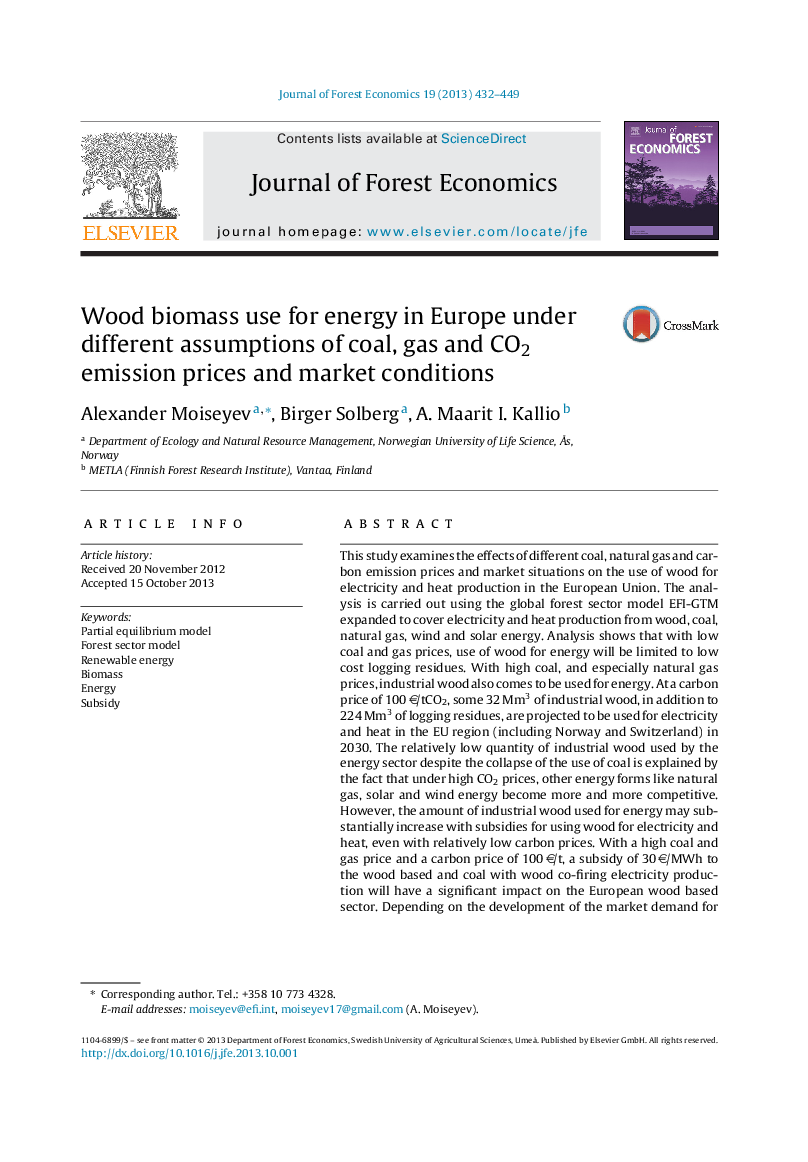| کد مقاله | کد نشریه | سال انتشار | مقاله انگلیسی | نسخه تمام متن |
|---|---|---|---|---|
| 92013 | 159891 | 2013 | 18 صفحه PDF | دانلود رایگان |
This study examines the effects of different coal, natural gas and carbon emission prices and market situations on the use of wood for electricity and heat production in the European Union. The analysis is carried out using the global forest sector model EFI-GTM expanded to cover electricity and heat production from wood, coal, natural gas, wind and solar energy. Analysis shows that with low coal and gas prices, use of wood for energy will be limited to low cost logging residues. With high coal, and especially natural gas prices, industrial wood also comes to be used for energy. At a carbon price of 100 €/tCO2, some 32 Mm3 of industrial wood, in addition to 224 Mm3 of logging residues, are projected to be used for electricity and heat in the EU region (including Norway and Switzerland) in 2030. The relatively low quantity of industrial wood used by the energy sector despite the collapse of the use of coal is explained by the fact that under high CO2 prices, other energy forms like natural gas, solar and wind energy become more and more competitive. However, the amount of industrial wood used for energy may substantially increase with subsidies for using wood for electricity and heat, even with relatively low carbon prices. With a high coal and gas price and a carbon price of 100 €/t, a subsidy of 30 €/MWh to the wood based and coal with wood co-firing electricity production will have a significant impact on the European wood based sector. Depending on the development of the market demand for forest industry products, such a subsidy may cause a 10–12.5% reduction in forest products production, a 6–9% increase in harvest level, about 30–60% increase in the pulpwood prices, and a 6–9 fold increase of wood imports in the EU, compared to the respective case without a subsidy in 2030.
Journal: Journal of Forest Economics - Volume 19, Issue 4, December 2013, Pages 432–449
